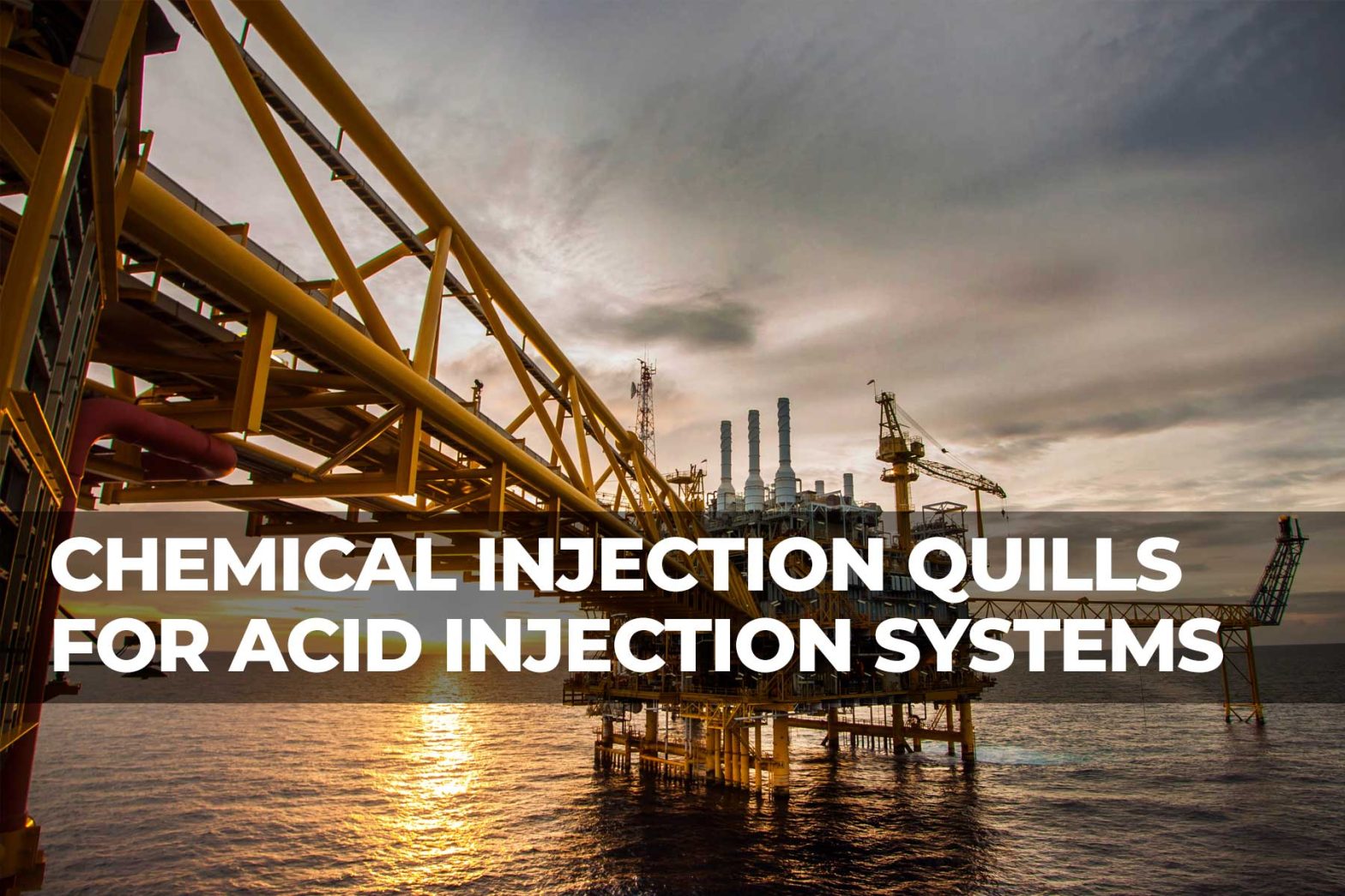Chemical injection quills are specialized devices that are used to inject chemicals into pipelines for various purposes, such as controlling corrosion and maintaining the pH level of the fluid. One of the most common uses of chemical injection quills is in acid injection systems, which are used in a variety of industries, including oil and gas production, water treatment plants, and chemical manufacturing.
Acid injection systems are used to clean and maintain pipelines, by dissolving corrosion, rust, and other deposits that may have accumulated on the internal surfaces of the pipes. The acid is injected into the pipeline in a controlled manner, through the use of chemical injection quills. These quills are inserted into the pipeline at strategic locations, and have a small outlet that allows the acid to be released at a controlled rate. The acid is typically injected into the pipeline using a chemical metering pump, which is connected to the quill.
Chemical injection quills manufactured in India, are designed to be highly accurate, reliable, and durable, which makes them ideal for use in acid injection systems. The quills are typically made of stainless steel or other corrosion-resistant materials, and are equipped with flow control valves, which allow for precise control of the acid injection rate.
One of the main advantages of using chemical injection quills in acid injection systems is the improved precision and control of the acid injection. The quills allow for the accurate and precise injection of the acid, which reduces the risk of leaks and spills, and ensures that the acid is injected at the right location, flow rate, and pressure.
In addition to the improved precision and control, the use of chemical injection quills in acid injection systems also provides other benefits. For example, it increases the efficiency and cost-effectiveness of the acid injection process, as it reduces the amount of acid needed and minimizes the risk of leaks and spills. Moreover, it increases the lifespan of the pipeline and reduces maintenance costs.
There are many real-world examples of the use of chemical injection quills in acid injection systems in various industries. For example, in the oil and gas industry, acid injection systems are used to clean and maintain pipelines that transport crude oil, natural gas, and other hydrocarbons. In the water treatment industry, acid injection systems are used to clean and maintain pipelines that transport water. And in chemical manufacturing plants, acid injection systems are used to clean and maintain pipelines that transport chemicals.
Description of the components of a chemical injection quill and how they function
Chemical injection quills are specialized devices that are used to inject chemicals into pipelines. They typically consist of several key components that work together to control the flow of the chemical and ensure accurate and precise injection.
- Inlet: The inlet is the point where the chemical is introduced into the quill. It is typically connected to a chemical metering pump, which is used to control the flow rate of the chemical.
- Outlet: The outlet is the point where the chemical exits the quill and enters the pipeline. It is typically a small nozzle or opening that allows for precise and accurate injection of the chemical.
- Flow control valve: The flow control valve is used to regulate the flow rate of the chemical. It can be adjusted to change the flow rate, which allows for precise control of the chemical injection.
- Check valve: A check valve is used to prevent backflow of the chemical. It allows the chemical to flow in one direction and prevents it from flowing back into the quill.
- Elastomeric seals: Elastomeric seals are used to create a tight seal between the quill and the pipeline. They help to prevent leaks and spills, and ensure that the chemical is injected into the correct location.
- Material: Chemical injection quills are typically made of stainless steel or other corrosion-resistant materials. These materials are selected based on the chemical being injected, the temperature and pressure of the pipeline, and other factors.
In conclusion, chemical injection quills are essential components in acid injection systems, as they allow for the accurate and precise injection of acid into pipelines. The use of chemical injection quills in acid injection systems improves precision and control, increases efficiency and cost-effectiveness, increases the lifespan of the pipeline and reduces maintenance costs. They are widely used in various industries, including oil and gas production, water treatment plants, and chemical manufacturing.
Crystal Industrial Syndicate from India, makes a range of chemical injection quills for a variety of industrial processes. Our injection quills are manufactured in India and comply with the world’s most stringent certifications. Our products are installed around the world, from North America and Europe to Africa and the Middle East. Contact us to know more about how we can support your chemical injection quills requirements. Contact us
Copyright © 2023 by Crystal Industrial Syndicate Pvt Ltd. All rights reserved. www.crystalindustrial.in
